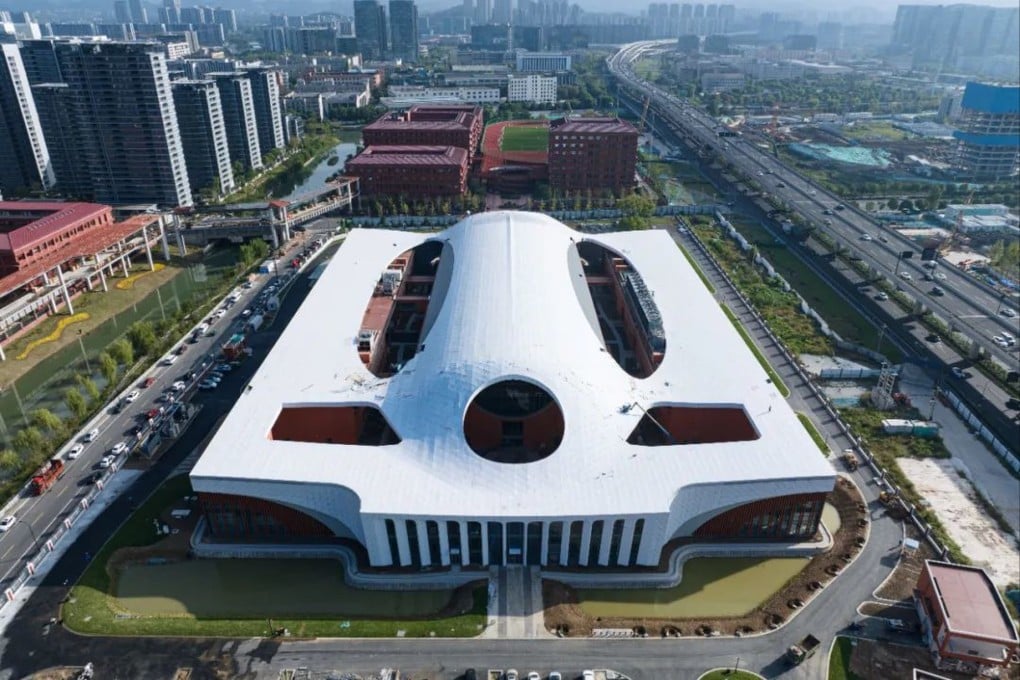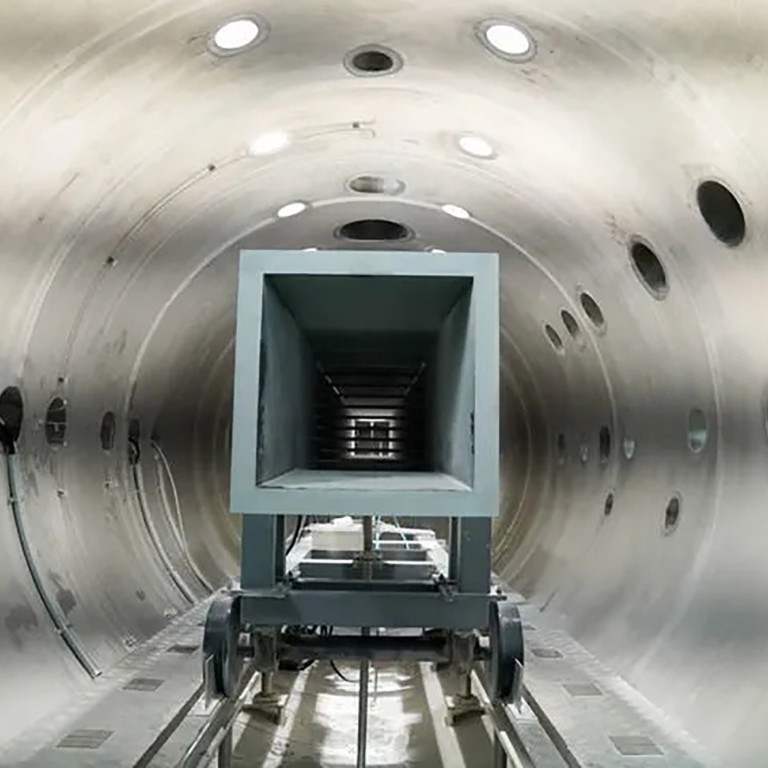Once fully operational, the Centrifugal Hypergravity and Interdisciplinary Experiment Facility (CHIEF) will offer a multidisciplinary science platform with the world's largest hypergravity centrifuge, helping to solve perplexing engineering problems in several fields.
The project's preliminary completion is a milestone in the field of hypergravity research, according to a news release on Monday by the government of Hangzhou, the capital of eastern China's Zhejiang province, where the facility is located.
"As planned, the first phase of commissioning will take place this year," it said in a release.
China turns on hyper-gravity machine to ‘compress’ time and space
Revolutionary research tool will dial up gravity to mimic natural events and help to tap future energy reserves, solve engineering puzzles
Once fully operational, the Centrifugal Hypergravity and Interdisciplinary Experiment Facility (CHIEF) will offer a multidisciplinary science platform with the world’s largest hypergravity centrifuge, helping to solve perplexing engineering problems in several fields.
The project’s preliminary completion is a milestone in the field of hypergravity research, according to a news release on Monday by the government of Hangzhou, the capital of eastern China’s Zhejiang province, where the facility is located. . .
- The project was given the green light in 2018 by China's top economic planner, the National Development and Reform Commission (NDRC). Construction began in 2020, under the supervision of scientists from Zhejiang University.
The main engine of the first centrifuge - a device resembling two massive arms holding two baskets where the experimental modules will be placed - has been installed. Fabrication of the remaining two centrifuges and 10 on-board units is under way, according to the Hangzhou government.
Earth's gravity - referred to as normal gravity - is expressed as 1g (unit of gravity), and anything greater than 1g is called hypergravity.
Hyper-gravity centrifuges are seen as a revolutionary research tool because of their ability to create extreme physical conditions that do not exist in everyday environments.
In a 2019 Zhejiang University article detailing the proposal and design of CHIEF, Chen Yunmin, with the Chinese Academy of Sciences and professor at the university, said that facilities like this could "compress" time and space, allowing for research into many complex physics problems and serving a wide range of engineering purposes.
The project is designed to house six hypergravity experiment chambers, each of which will focus on a particular area of research: slope and dam engineering, seismic geotechnics, deep-sea engineering, deep-earth engineering and environment, geological processes and materials processing.
In deep-sea engineering, for example, such scientific exploration could bring natural gas hydrates a step closer to reality.
Natural gas hydrates - or combustible ice - are a frozen fossil fuel found in the seabed and beneath permafrost, consisting of water and gas, usually methane. They are considered to be abundant energy reserves, with wide distribution and offering clean combustion, making them one of the most promising alternative energy sources of the future.
- The hyper-gravity experiments will be capable of reproducing the extraction process and simulating different extraction methods in the deep sea, providing important scientific and experimental support for optimal extraction and minimising future mishaps, according to scientists involved in the project.
4 Hong Kong public universities ranked among world’s best for graduate employability
How Beijing flipped the South China Sea game with a single island
Xi urges ‘extreme caution’ from US on Taiwan matters, South China Sea disputes



No comments:
Post a Comment